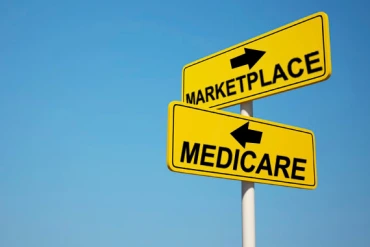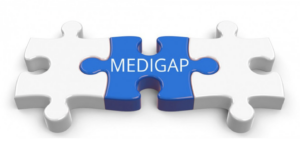Understanding Medicare and the Marketplace: What You Need to Know

Navigating the complex world of healthcare can be challenging, especially when it comes to understanding the differences between Medicare and the Marketplace. If you are transitioning from the Marketplace to Medicare, it’s essential to understand the implications of this change and what it means for your coverage and finances.
In this article, we’ll explore the key differences between Medicare and the Marketplace and provide practical advice on how to make the switch. We’ll also answer some common questions and provide important tips to help ensure a smooth transition.
Understanding Medicare and the Marketplace
Medicare is a federal health insurance program that provides coverage to people who are 65 or older, as well as to younger individuals with certain disabilities or medical conditions. The program has four parts: A, B, C, and D.
The Marketplace, also known as the Health Insurance Marketplace or Obamacare, is a website where individuals under the age of 65 can shop for and purchase health insurance plans. The plans available on the Marketplace are typically offered by private insurance companies and are regulated by the Affordable Care Act (ACA).
If you are transitioning from the Marketplace to Medicare, it’s important to understand that Medicare Part A coverage starts on the first day of the month you turn 65 (or earlier if you have a disability or certain medical conditions). Once your Part A coverage starts, you won’t be eligible for premium tax credits or other savings for a Marketplace plan.
This means that if you kept your Marketplace plan, you’d have to pay full price. To avoid paying more than you need to for your healthcare coverage, it’s important to make the switch to Medicare as soon as you are eligible.
Changing from the Marketplace to Medicare
If you are enrolled in a Marketplace plan and become eligible for Medicare, you should choose to enroll in Medicare instead of continuing with your Marketplace plan.
It’s important to note that if you continue to receive help to pay your Marketplace plan premiums after you have Medicare, you may have to pay back the help you received when you file your taxes. This is why it’s important to make the switch to Medicare as soon as you are eligible to avoid any unexpected expenses.
Key Considerations for Making the Switch
When transitioning from the Marketplace to Medicare, there are several important considerations to keep in mind. These include:
- Eligibility: You can enroll in Medicare if you are 65 or older, or if you have certain disabilities or medical conditions. Make sure you understand the eligibility requirements before making the switch.
- Enrollment Periods: There are specific enrollment periods for Medicare, including the Initial Enrollment Period (IEP), General Enrollment Period (GEP), and Special Enrollment Period (SEP). Make sure you understand the enrollment periods and deadlines to ensure you don’t miss out on coverage.
- Coverage Options: Medicare offers a range of coverage options, including Original Medicare (Parts A and B), Medicare Advantage (Part C), and Prescription Drug Plans (Part D). Make sure you understand the different options and what they cover to choose the best plan for your needs.
- Costs: Medicare costs can vary depending on the plan you choose and your income. Make sure you understand the costs associated with each plan to ensure you can afford your healthcare coverage.
Helpful Links
- https://www.healthcare.gov/medicare/changing-from-marketplace-to-medicare/
- https://www.medicare.gov/about-us/medicare-the-marketplace
Once your Medicare Part A coverage starts, you won’t be eligible for a premium tax credit or other savings for a Marketplace plan. If you kept your Marketplace plan, you’d have to pay full price.
Once you’re considered eligible for or enrolled in Part A, you won’t qualify for help from the Marketplace to pay your Marketplace plan premiums or other medical costs. If you continue to get help to pay your Marketplace plan premiums after you have Medicare, you may have to pay back the help you got when you file your taxes.
Frequently Asked Questions
Q: What happens if I don’t switch from the Marketplace to Medicare?
A: If you don’t switch from the Marketplace to Medicare, you’ll have to pay full price for your healthcare coverage, as you won’t be eligible for premium tax credits or other savings for a Marketplace plan once your Medicare Part A coverage starts.
Q: Can I switch from Medicare to the Marketplace if I change my mind?
A: Yes, you can switch from Medicare to the Marketplace during the Open Enrollment Period (OEP), which runs from October 15th to December 15 each year. However, it’s important to consider the costs and coverage options carefully before making the switch.
Q: Will my healthcare coverage change when I switch from the Marketplace to Medicare?
A: Yes, your healthcare coverage will change when you switch from the Marketplace to Medicare. Medicare offers a range of coverage options, including Original Medicare (Parts A and B), Medicare Advantage (Part C), and Prescription Drug Plans (Part D). Make sure you understand the different options and what they cover to choose the best plan for your needs.
Making the switch from the Marketplace to Medicare can seem overwhelming, but it’s an important step to ensure you have the coverage you need as you age. By understanding the key differences between Medicare and the Marketplace, as well as the important considerations when making the switch, you can ensure a smooth transition and avoid any unexpected expenses.
Remember, once your Medicare Part A coverage starts, you won’t be eligible for premium tax credits or other savings for a Marketplace plan. So, it’s important to make the switch as soon as you are eligible to avoid paying more than you need to for your healthcare coverage.
If you have any questions or concerns about transitioning from the Marketplace to Medicare, reach out to the team of New York Medicare Advisors at Plan Medicare. We are here to help with all of your Medicare needs.






